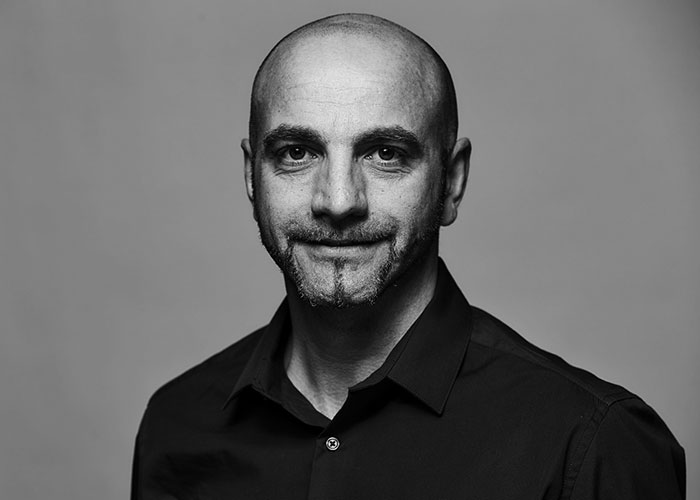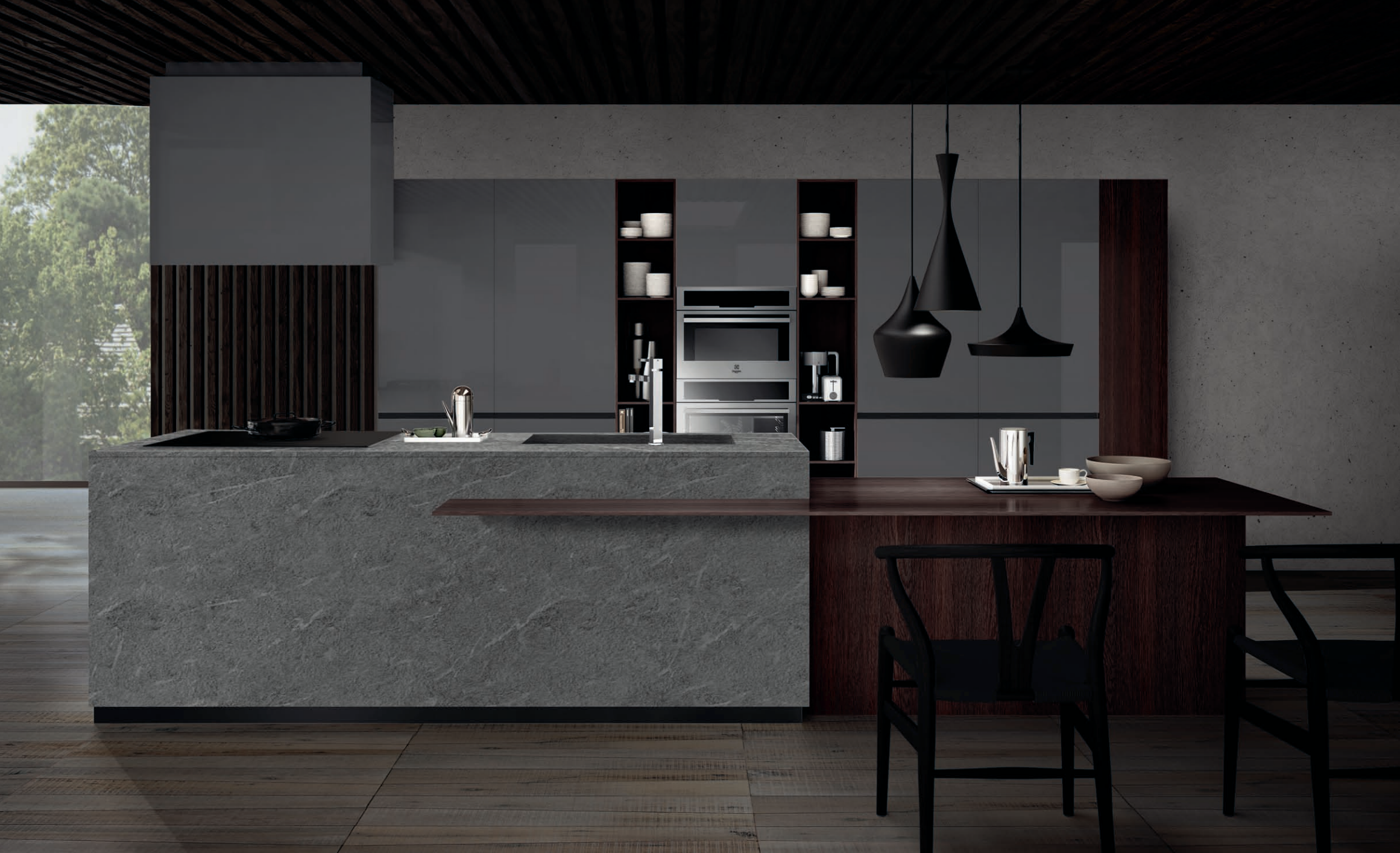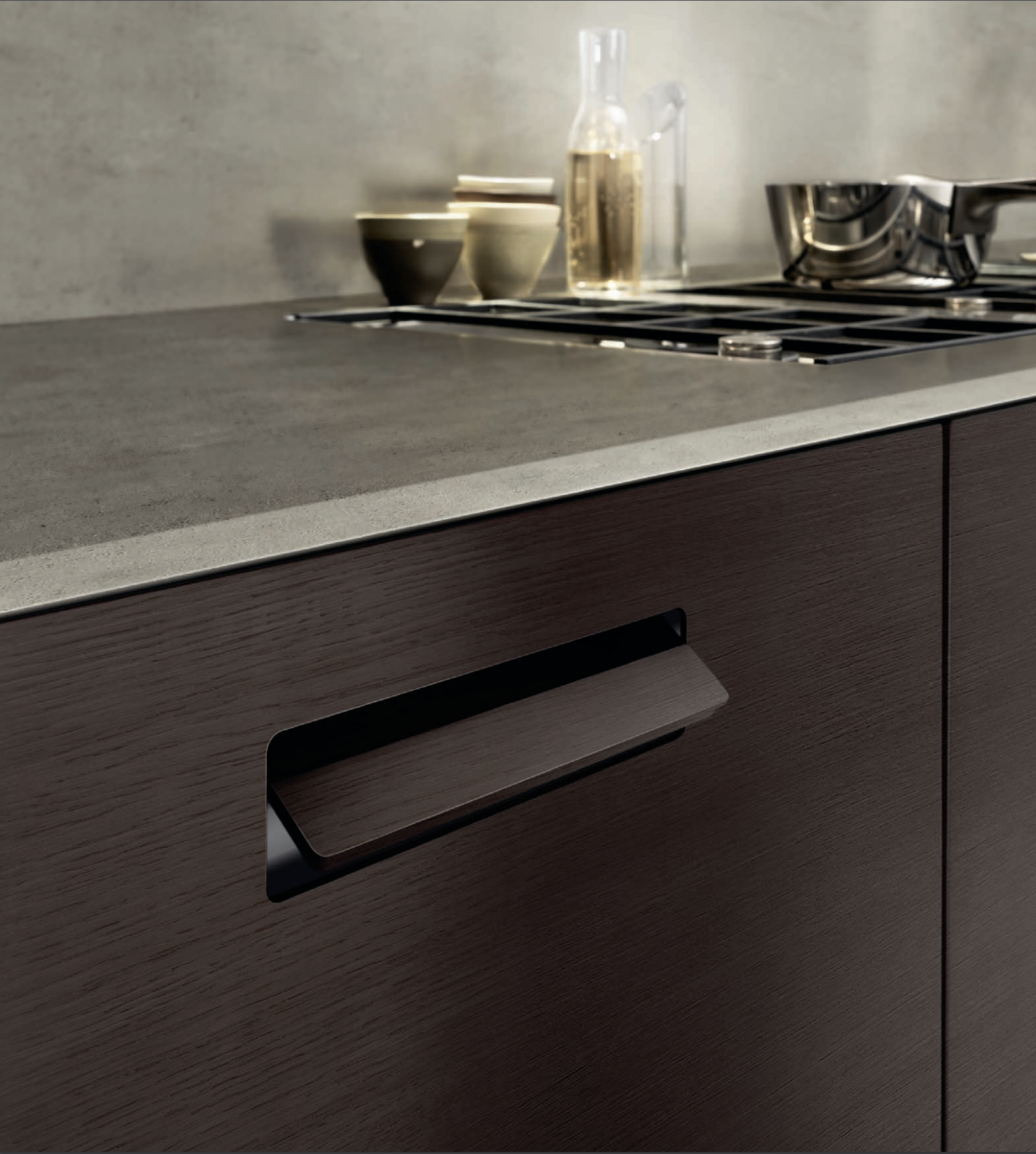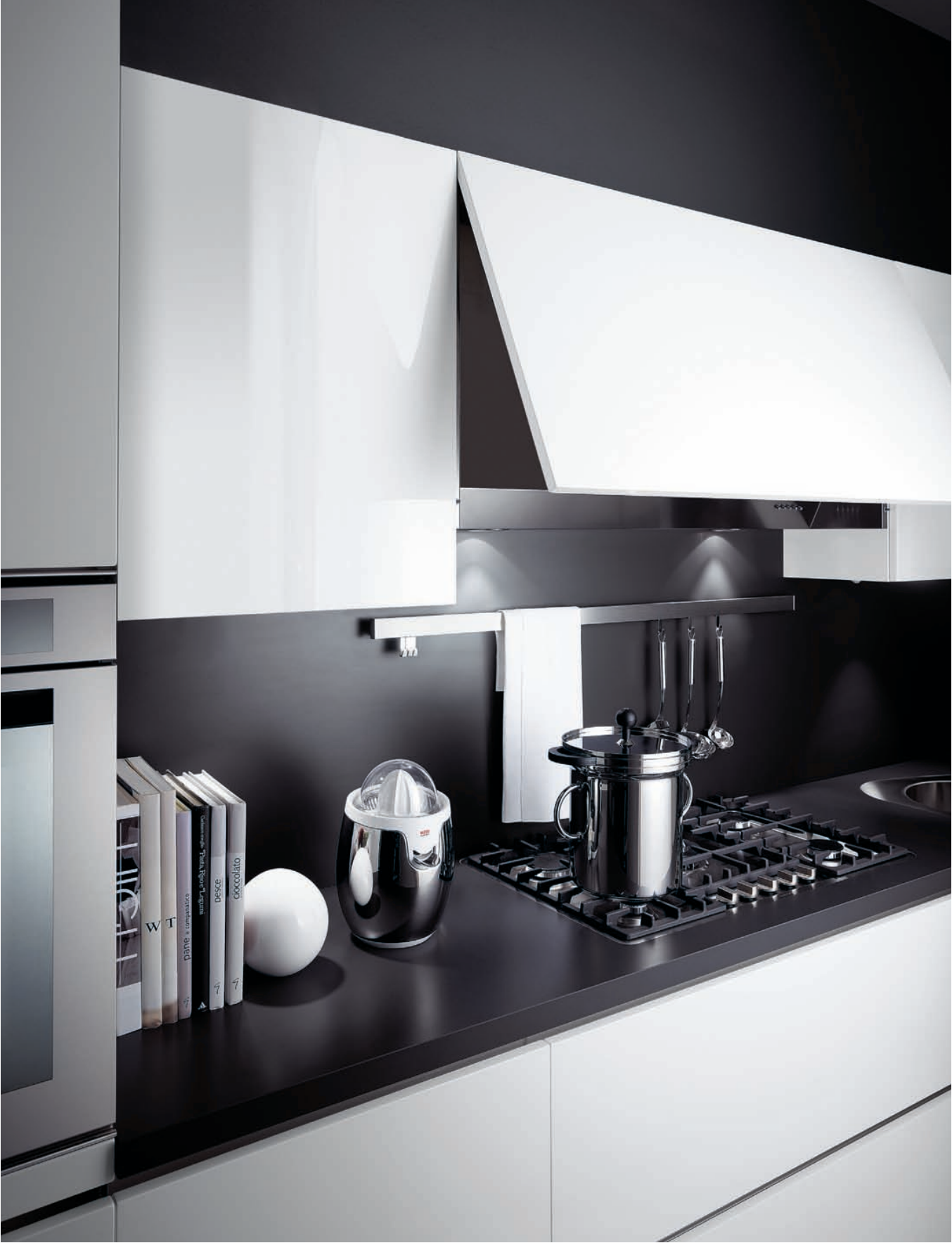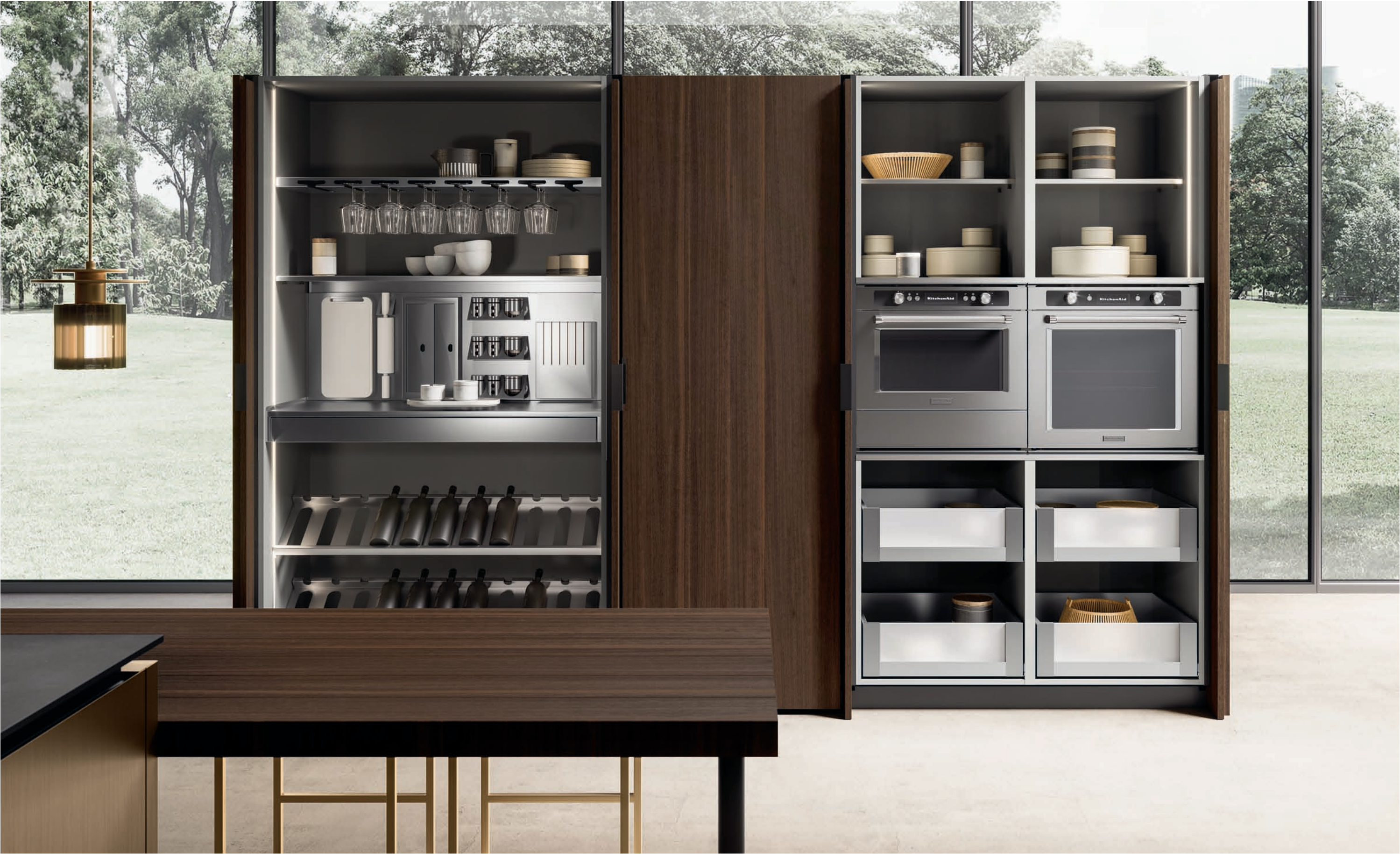Images courtesy French Cabinetry, featuring Composit
By Brian Libby
European Charm
Have you ever wanted to bring a touch of European style home? That’s only the beginning of why French Cabinetry, a California-based provider of fine European cabinetry from conception to installation, continues to enjoy popularity. Forgoing the bargain route and cutting corners, French Cabinetry sits proudly at the other end of the spectrum, where green kitchens and baths take on the highest levels of precision, craftsmanship, durability and sustainability.
Founder’s Vision
The company was founded in 2017 by Jam Iksoulene, who had emigrated to America many years earlier from Loire Valley in France, but in 2005 went back to his native Europe to learn more.
“I wanted to understand cabinets in Europe, which was a better way of working than the U.S.,” he explains. “Everything was connected to the environment. For example, the way they were manufacturing the cabinets, they were already careful about using recycled materials and VOC-free paints, which was not the case in the U.S. I started to understand that high-end customers are really focused on our ecological footprint. So when I came back to the Bay Area and opened my showroom, right away customers were asking, ‘Is it a green product?’ I said, ‘Of course.’”
Design and Conception
French Cabinetry doesn’t just sell cabinets from Europe. This is a full-service firm that begins with an initial client consultation, be it from the company’s Palo Alto, California, studio or via video call.
“We work really closely with the customer to learn their needs. We ask our potential customer, ‘What is your lifestyle? Do you have a lot of friends over? When you have guests, do you stand around the island in the kitchen?’ Every design is made to order,” Iksoulene explains. There are a range of different product lines in varying styles for kitchens and bathrooms, some more contemporary and some transitional. The French Cabinetry team can also assist with appliance, counter, tile, floor, and fixture selections.
Elevated Craftsmanship
No matter what material you choose, French Cabinetry can deliver, with more than 200 hardwood species offered, including popular choices like oak, alder, and walnut, as well as cabinets made from materials like bamboo, MDF, melamine, solid surface, stainless steel, even leather and concrete. No matter what the material, however, what sets the company apart is precise craftsmanship and durability, and its commitment to sustainable practices.
“We import our cabinets directly from Europe or we can manufacture them from Los Angeles,” Iksoulene says. Yet he cautions that the right hardware is often the overlooked component in quality cabinetry. And by hardware, he means literally everything but the kitchen sink—not only the pulls and knobs but also everything inside and behind the cabinets and drawers.
“In the U.S, everything is kind of set where it doesn’t matter where you purchase your cabinets: it’s often the same materials,” he explains. “From one cabinet maker to another, oftentimes when you open a drawer or cabinet from multiple houses in the U.S., you’ll find the same finishes inside, the same undermount glide or side glide.
“When you start to look around and discover European cabinets, there is a big difference. We don’t need to cut plywood to make cabinet boxes. They’re already coming from Europe as metal or even metal plus glass boxes, with different heights to choose from, different colors, and different materials. Not that we don’t find that in the U.S., but it’s not as popular.”
Reconfiguring the Home
Despite all the disruption the pandemic brought, business has been brisk for French Cabinetry, and the industry as a whole.
“People started to realize when you’re stuck at home, it’s really important to have a comfortable home and a functional kitchen,” Iksoulene says. “A lot of people who used to go to the office every day would eat at work or have food delivered in the evening, but suddenly they had to cook for themselves. They realized, ‘I don’t have the right layout.’
“I’m hearing the same from our colleagues in Europe. ‘How can I make my home more comfortable, make my kitchen work better, and make my home an office?’ Worldwide, suddenly there were a lot of orders for anything connected to the house. The pandemic brought a rush of home remodeling.”
Kitchen Confidential
Today home décor has evolved with technology in a way that’s more conducive to minimalist European styling. We’re less likely to fill our homes with stereo equipment and shelves full of books and CDs because everything is available digitally, leaving the room looking more minimal than a generation ago without even trying. We’re growing more accustomed to clean-lined spaces where equipment doesn’t live out in the open.
In that vein, an emerging European trend Iksoulene sees coming to the United States is cabinetry that actually screens off things we used to keep out in the open, like sinks and countertops.
“You can have a wall of cabinets that can look like flat-panel, but behind them you have your sink and your appliances,” the French Cabinetry founder explains. “I do have the feeling that this is starting to interest customers in the U.S. You can have your small appliances connected—coffee machine, toaster—but if you don’t want to spend time cleaning up in the morning, you close the cabinet door and that’s it. That’s nice.”
#EcoRenovate: A Sustainable Redo
French Cabinetry’s green philosophy (think sustainable forestry resources, a manufacturing process with a near zero standard for net harmful emissions, and an in-house policy to recycle leftover waste as much as possible) made them the perfect kitchen cabinet partner for Elemental Green’s #EcoRenovate: the sustainable renovation of a penthouse apartment in Chicago’s iconic University Park Condominium.
The task was to update the kitchen and baths using healthy, eco-friendly materials and energy-saving elements while staying true to the building’s modernist beginnings. And French Cabinetry answered the call in the kitchen using Amber Edge Plyboo, a sustainable and eco-friendly architectural bamboo product. They custom-crafted cabinets in Los Angeles and shipped them complete for ease of installation.
The Renovation Plan
Unlike the previous shorter cabinets, these extend to the ceiling for additional storage and a more streamlined look. Iksoulene devised cutouts above one of the cabinet doors for continuity without blocking the air vent. And, French Cabinetry also fabricated a custom-designed, moveable island on casters so it could be easily moved if necessary.
Fireclay Tile’s handmade tiles—Maze in Warm Motif—form the backsplash and punctuate the bamboo cabinetry’s monochrome aesthetic, along with Bromo Natural Dekton stone by Cosentino. (It just so happens that Cosentino has also caught the eye of French Cabinetry—their Palo Alto showroom features countertops and backsplashes by the Italian brand, especially Dekton material.) Thin aluminum hardware pulls were chosen for their minimalist lines; their gold finish lends a subtle touch of luxe against the caramel-colored bamboo cabinet fronts.
Image courtesy Richard Kasemsarn
Eco-Friendly Cabinet Possibilities
Today bamboo comes in more stylistic options than it used to, with manufacturers like Plyboo able to create the look of other woods such as deep-toned walnut or blonder oak. Yet for those seeking sustainability without bamboo, Iksoulene says that’s no problem.
“Most of what we’re importing from Europe is already sustainable,” he explains. “One of the main factories we’re working with back in France, when they produce a kitchen, they will gather every piece of extra wood and, in the winter, they’ll heat the factory with them. And nothing is plywood. Most of their panels are high-pressure chipboard made out of reclaimed wood.” Which means they’re saving trees one cabinet, or kitchen, at a time.





